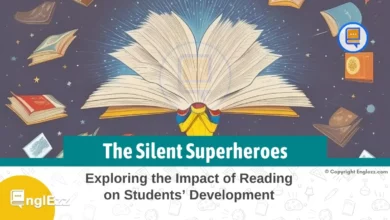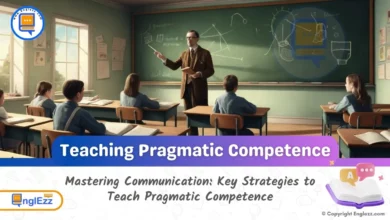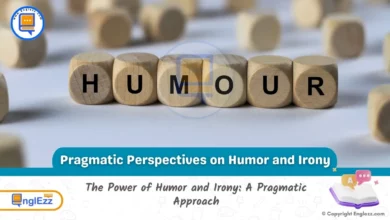Phonetics is a powerful tool that can help learners of any language to improve their pronunciation and comprehension skills. Phonetics is the study of speech sounds, their production, and the way they are perceived by the human ear. It is an important part of language education, yet it is often overlooked or misunderstood. Understanding phonetics can help learners to speak a new language more accurately and with greater confidence.
In this post, we will explore the science behind phonetics and how it can be used to enhance language education. From the International Phonetic Alphabet (IPA) to phonetic transcription exercises, we will provide you with practical tips and tools to improve your language skills through phonetics.
Table of Contents
- Introduction to the power of phonetics in language education
- Understanding the basics of phonetics and its importance in language learning
- The role of phonetics in speech production and perception
- How phonetics can enhance language skills such as pronunciation and intonation
- The impact of phonetics on language acquisition and fluency
- Practical applications of phonetics in language teaching and learning
- Tools and resources for incorporating phonetics into language education
- Case studies highlighting successful implementation of phonetics in language classrooms
- Addressing common challenges and misconceptions about phonetics in language education
- Embracing the power of phonetics to revolutionize language learning
- Final Thoughts on The Power of Phonetics In Language Education
Introduction to the power of phonetics in language education
Phonetics, the study of the sounds of human speech, plays a crucial role in language education. By understanding the intricate ways in which sounds are produced, perceived, and classified, educators can unlock a powerful tool for enhancing language learning experiences. Phonetics delves into the physical properties of speech sounds, such as their articulation and acoustic characteristics, as well as the cognitive processes involved in their interpretation by the human brain.

Through phonetics, language educators can facilitate a deeper understanding of pronunciation, intonation, and phonological patterns, enabling students to improve their speaking and listening skills with precision and accuracy. In this blog post, we will explore the fascinating world of phonetics and its transformative impact on language education.
Understanding the basics of phonetics and its importance in language learning
Phonetics is the study of speech sounds and how they are produced, transmitted, and perceived. It plays a crucial role in language learning as it provides a foundation for understanding the sounds of a language and how they are used to form words and convey meaning. By grasping the basics of phonetics, language learners can improve their pronunciation, listening skills, and overall communication abilities.
One key aspect of phonetics is the International Phonetic Alphabet (IPA), which provides a standardized way to represent the sounds of all languages. Learning the IPA can help language learners accurately pronounce words in any language and understand the differences in sound systems between languages.
Understanding phonetics also helps learners recognize patterns and rules in pronunciation, such as how sounds change depending on their position in a word or in relation to other sounds. This knowledge can enhance language fluency and make it easier to decipher unfamiliar words or accents.
In language education, incorporating phonetics can lead to more effective teaching methods and better student outcomes. By focusing on sound science, educators can help learners develop a strong foundation in pronunciation and listening skills, ultimately enhancing their overall language proficiency.
The role of phonetics in speech production and perception
Phonetics plays a crucial role in both speech production and perception. It serves as the foundation for understanding how sounds are articulated and interpreted within a language. In speech production, phonetics helps individuals learn the correct articulation of sounds, ensuring clear and accurate communication. By studying the articulatory aspects of phonetics, learners can refine their pronunciation and develop fluency in speaking a language.
Moreover, phonetics also plays a vital role in speech perception. It enables individuals to distinguish between different sounds and comprehend spoken language effectively. By understanding the acoustic properties of sounds, learners can improve their listening skills and interpret speech more accurately. Phonetics provides the necessary framework for recognizing and categorizing sounds, allowing individuals to decode spoken language with precision.
Overall, the study of phonetics enhances language education by providing insights into the mechanics of speech production and perception. By delving into the intricacies of phonetics, learners can enhance their linguistic abilities and engage more proficiently in communication.
How phonetics can enhance language skills such as pronunciation and intonation
Phonetics plays a crucial role in enhancing language skills, particularly in pronunciation and intonation. By focusing on the sound patterns and structures of language, learners can improve their ability to articulate words accurately and convey meaning effectively. Understanding phonetics allows students to recognize and produce the subtle differences in sounds that exist across languages, ultimately leading to clearer and more natural speech.
Through phonetic training, learners can develop their ear for distinguishing and reproducing sounds, leading to improved pronunciation. By practicing phonetic exercises, students can learn to articulate sounds that may not exist in their native language, thus expanding their phonetic repertoire. Additionally, mastering intonation patterns through phonetic study can help learners convey nuances of meaning, such as emphasis, emotion, and attitude, in their speech.
Overall, incorporating phonetics into language education provides students with a solid foundation for mastering pronunciation and intonation, ultimately enhancing their overall language skills and communication abilities.
The impact of phonetics on language acquisition and fluency
Phonetics plays a crucial role in language acquisition and fluency. Understanding the sounds of a language is fundamental to mastering pronunciation, comprehension, and effective communication. By delving into the study of phonetics, language learners can grasp the nuances of different sounds, intonations, and accents, enabling them to communicate more effectively and authentically.
When learners have a strong foundation in phonetics, they can accurately produce and distinguish between sounds that may not exist in their native language. This ability is essential for achieving clear and natural speech in a target language. Moreover, phonetic knowledge enhances listening skills, allowing learners to decipher unfamiliar words and phrases based on their sound patterns.

In language education, incorporating phonetics into the curriculum can significantly improve students’ overall language proficiency. By focusing on phonetic awareness, learners can develop a better ear for the language, leading to increased fluency and confidence in speaking. Through targeted exercises and practice, students can refine their pronunciation and intonation, ultimately enhancing their communicative abilities.
In essence, phonetics serves as a powerful tool in language learning, providing learners with the skills and knowledge needed to navigate the intricacies of pronunciation and sound systems. By recognizing the impact of phonetics on language acquisition and fluency, educators can empower students to unlock the full potential of their linguistic abilities.
Practical applications of phonetics in language teaching and learning
Phonetics plays a crucial role in language teaching and learning, offering practical applications that can significantly enhance the educational experience. One key application is in improving pronunciation skills. By understanding the phonetic components of a language, learners can accurately replicate the sounds and intonations essential for clear communication.
Furthermore, phonetics can aid in language comprehension by breaking down speech into its individual sounds, making it easier for learners to recognize and interpret words correctly. This can be especially beneficial in languages with complex phonetic systems or unfamiliar sounds.
Another practical application of phonetics in language education is in accent reduction. By focusing on phonetic patterns and practicing correct pronunciation, learners can work towards minimizing their accent and sounding more native-like.
Incorporating phonetics into language teaching also helps learners develop their listening skills. By training their ears to differentiate between various sounds and phonetic features, students can improve their ability to comprehend spoken language accurately.
Overall, the practical applications of phonetics in language education are vast and can greatly contribute to the effectiveness and efficiency of language teaching and learning processes. By harnessing the power of phonetics, educators can empower students to achieve greater proficiency and fluency in their target language.
Tools and resources for incorporating phonetics into language education
When it comes to incorporating phonetics into language education, having the right tools and resources can make a significant difference in the learning experience. One valuable tool is the International Phonetic Alphabet (IPA), which provides a standardized way to represent the sounds of speech. By familiarizing students with the IPA, educators can help them accurately pronounce words and improve their overall language skills.
Online resources such as interactive phonetic charts and pronunciation guides can also be incredibly helpful in teaching phonetics. These tools allow students to listen to the sounds of different languages, practice pronunciation, and receive immediate feedback on their accuracy. Additionally, language learning apps and software often include phonetic exercises and resources to assist students in mastering the nuances of speech sounds.
Incorporating multimedia resources, such as videos and audio recordings, can further enhance the learning process by providing real-life examples of spoken language. By exposing students to authentic speech patterns and intonations, educators can help them develop a more natural and fluent speaking style.
Overall, utilizing a variety of tools and resources that cater to different learning styles can effectively enhance the incorporation of phonetics into language education. By providing students with the support they need to understand and produce speech sounds accurately, educators can empower them to become confident and proficient communicators in their target language.
Case studies highlighting successful implementation of phonetics in language classrooms
Implementing phonetics in language classrooms has proven to be a game-changer, revolutionizing the way students learn and comprehend language. Let’s delve into some intriguing case studies that showcase the successful integration of phonetics in language education.
Case Study 1:
A high school in Spain introduced a phonetics-based program in their English classes. By incorporating interactive activities focusing on pronunciation and intonation, students demonstrated remarkable improvements in their spoken English skills. The use of phonetics not only enhanced their accuracy but also boosted their confidence in expressing themselves fluently.
Case Study 2:
In a university setting in Japan, a language professor integrated phonetics into the curriculum for teaching French as a foreign language. Through specialized training in phonetic transcription and sound discrimination exercises, students exhibited enhanced listening comprehension and speech production abilities. The incorporation of phonetics resulted in a deeper understanding of French phonology, leading to more authentic pronunciation.
Case Study 3:
An online language learning platform utilized phonetics to teach Mandarin Chinese tones to non-native speakers. By emphasizing the importance of tone accuracy through phonetic exercises and auditory feedback, learners showed significant progress in distinguishing and producing tones correctly. The systematic approach to phonetics enabled students to master tonal distinctions, facilitating better communication in Mandarin.
These case studies exemplify the effectiveness of incorporating phonetics in language education, underscoring its transformative impact on students’ linguistic proficiency and overall learning experience. By embracing sound science in the classroom, educators can unlock the full potential of phonetics to empower language learners worldwide.
Addressing common challenges and misconceptions about phonetics in language education
In the realm of language education, phonetics plays a crucial role in improving pronunciation, fluency, and overall communication skills. However, there are common challenges and misconceptions that often hinder the effective integration of phonetics in language learning.
One prevalent misconception is that phonetics is only relevant for linguists or language experts, leading many to overlook its practical benefits for language learners of all levels. In reality, understanding phonetics can significantly enhance one’s ability to grasp the nuances of pronunciation, intonation, and accent, thereby improving overall comprehension and communication skills.
Another challenge is the perception that mastering phonetics requires complex technical knowledge and training. While phonetics does involve the study of sounds and their production, it can be effectively incorporated into language education through practical activities, drills, and exercises that focus on sound recognition and articulation.
By addressing these common challenges and misconceptions, language educators can unlock the full potential of phonetics in enhancing language learning experiences for students. Emphasizing the practical applications of phonetics and providing engaging and interactive resources can empower learners to improve their pronunciation and communication skills effectively.
Embracing the power of phonetics to revolutionize language learning
In conclusion, embracing the power of phonetics stands as a revolutionary approach to enhancing language education. By delving into the intricacies of sound science, educators and learners alike can unlock a deeper understanding of language structures and nuances. Phonetics serves as a bridge that connects the auditory and visual elements of language, enabling learners to grasp pronunciation, intonation, and phonological patterns with greater clarity.
Through the systematic study of phonetics, language learners can develop their listening and speaking skills in a more comprehensive manner, leading to improved communication proficiency. By incorporating phonetic principles into language curricula, educators can create dynamic learning experiences that cater to diverse learning styles and abilities.
Ultimately, the integration of phonetics into language education paves the way for a more immersive and effective language learning journey. As we continue to explore the transformative potential of sound science in linguistic studies, embracing phonetics as a fundamental tool can revolutionize the way we teach and learn languages, empowering individuals to communicate with confidence and fluency across cultural boundaries.
Final Thoughts on The Power of Phonetics In Language Education
We hope you found our blog post on unlocking the power of phonetics insightful and informative. Phonetics is a fascinating field that plays a crucial role in language education and communication. By understanding the science behind speech sounds, educators and learners alike can enhance their language skills and fluency.
We encourage you to explore the world of phonetics further and incorporate its principles into your language learning journey. Let the power of sound science guide you towards mastering the art of effective communication.









The Power of Phonetics In Language Education is at your fingertips! Explore innovative techniques backed by sound science to elevate your teaching.